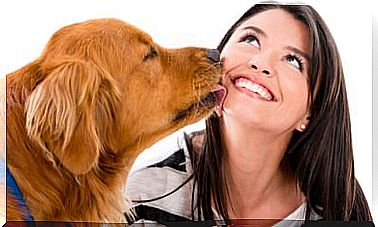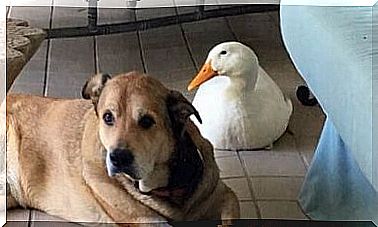The Dogs And The Vet
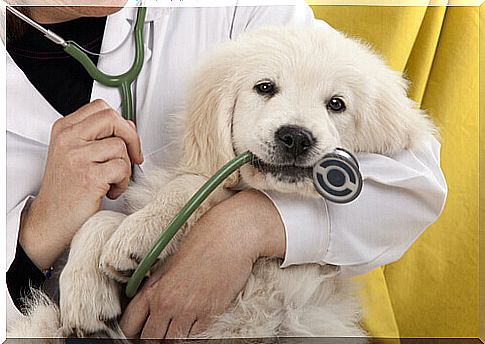
The fact that dogs don’t like the idea of going to the vet is well known. This is due to a number of factors that would stress anyone: an unfamiliar environment, slippery floors and, many times, unpleasant tests such as vaccinations and elimination of parasites. Veterinary clinics are also always full of smells, strange sounds and unknown people: all this is enough to make your pet want to escape. For these reasons we are going to list some tips to make these unpleasant visits as pleasant as possible.
Come and say hello to the vet with your dog
Unknown places tend to cause anxiety in animals, so it is best to let your dog know his doctor’s office. If it is in the same neighborhood as you, pass it every so often when you walk the dog, have it weighed and then continue your walk. This way the place will become more and more familiar to him, and it won’t be so hostile when you take him for a visit. If you want to do things right, bring some snacks that you know your dog likes, and have them give them to all the operators who work in the studio. If it’s a puppy, try to get started as soon as possible.
Touch your dog every day in different areas of the body
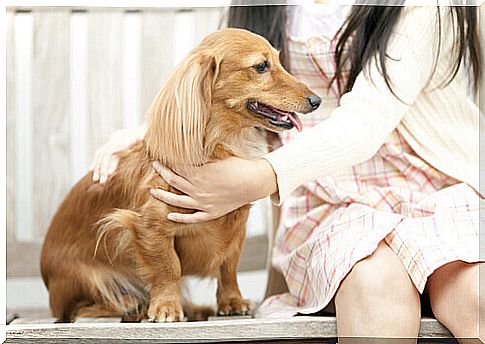
If you get your dog used to being touched, he won’t feel so strange when you take him to the vet. During routine exams they will examine his eyes, ears, mouth, listen to his lungs and heart, and touch him to check for lesions. If you do this yourself every day, he will likely feel less violated. At the same time it will be useful for you to familiarize yourself with its anatomy and find out if it has any bumps, wounds or softer areas, so that you can immediately report it to a specialist.
Play with your dog’s mouth
One of the hardest things is getting a dog to let his mouth be grabbed, especially when it comes to cleaning his teeth. Most owners usually skip this step, even though it is critical to their health. To accustom your little friend, it is recommended that from an early age you take the trouble to open his mouth, do a little inspection and give him a treat. This way your dog will get used to the idea that every time his mouth is examined, he will receive a snack.
Get your dog used to lying down, turning and holding him still
Even the most sociable dogs and those who allow themselves to be touched by people have problems when it comes to keeping them motionless or having them put on their backs. Nevertheless, during visits to the vet and especially in the case of emergencies, these steps could be fundamental for your pet’s life. If you perform these movements when you walk or play with your dog, your pet will understand that they are not violent gestures, and will become more tolerant to this type of contact. Try to lift it gently and, when you have turned it, caress its belly, trying to keep it in position as long as possible.
Teach him to sit, get up, lie down and turn around
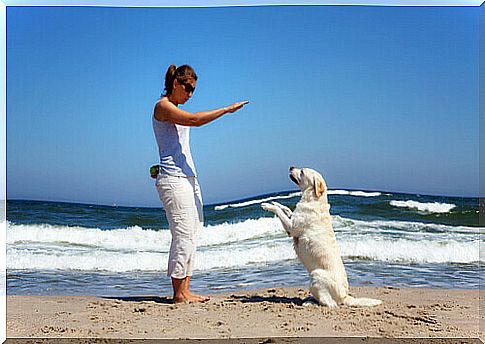
Basic training goes a long way when it comes to getting a dog examined by the vet. If you teach your dog to perform certain movements himself, without having to be manipulated by someone, it will be less stressful. In addition to the command to sit, stand up, lie down or turn around, teach him to give you his paw, to follow your finger with his gaze or to stare at you, it will be of great help during certain medical treatments.
Get your dog used to the muzzle
If a dog wears a muzzle, it doesn’t mean he’s ferocious. It is likely that in the face of some tests in sensitive areas of the body, the vet decides to make him wear a muzzle. If you get your dog used to wearing it, if he needs it for a medical emergency it will be less traumatic. Ask an expert for advice on a training muzzle to put on your pet only from time to time. Remember that this only serves to facilitate your visits to the vet.
